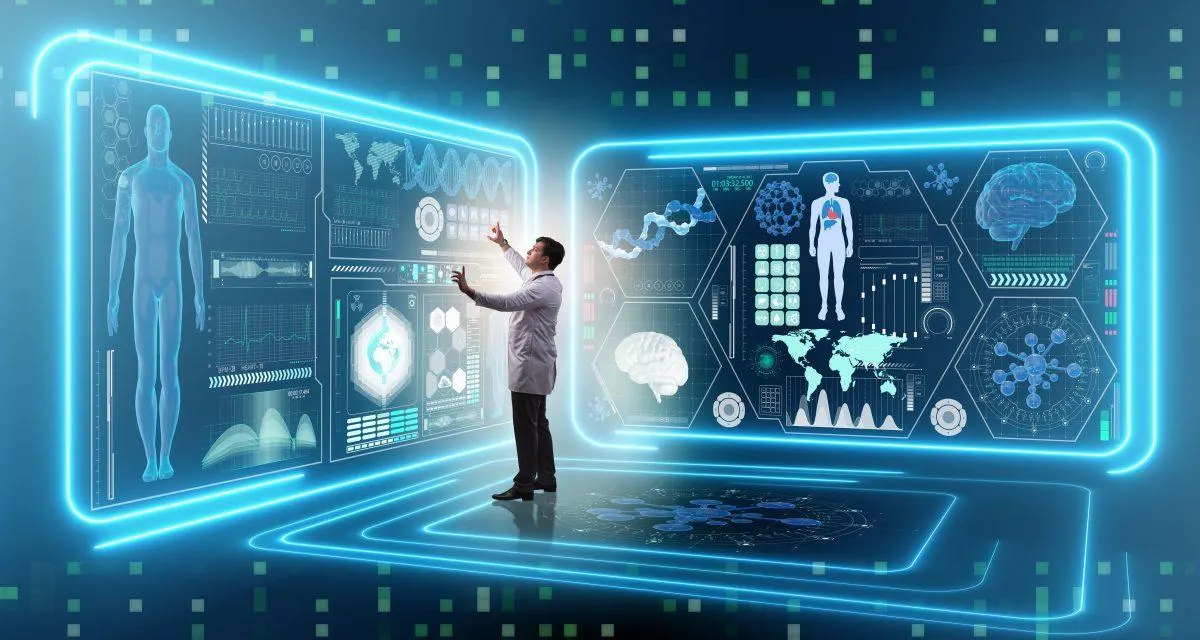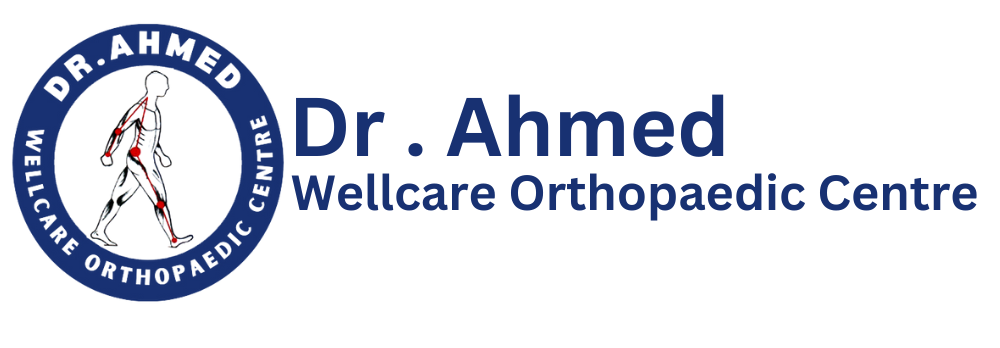Understanding Artificial Intelligence and Machine Learning
Artificial Intelligence (AI) and Machine Learning (ML) represent transformative technologies that are reshaping various sectors, particularly healthcare. AI refers to the simulation of human intelligence processes by machines, particularly computer systems. These processes include learning, reasoning, and self-correction. On the other hand, machine learning is a subset of AI that focuses on the development of algorithms and statistical models that enable computers to perform specific tasks without explicit instructions. Instead, ML systems learn from data input and improve over time through experience.
One of the distinguishing features of AI and ML is their approach to problem-solving. Traditional programming involves directly coding a set of rules for the computer to follow, often resulting in rigid and inflexible systems. In contrast, ML leverages vast amounts of data to discover patterns and insights that would not typically be evident. This ability to adapt and learn from new data makes ML particularly effective in analyzing complex datasets.
There are several types of AI, including reactive machines, limited memory, theory of mind, and self-aware systems. Most current applications in the medical field fall under the category of limited memory AI, which can use historical data to inform future decisions. Similarly, ML can be divided into supervised learning, unsupervised learning, and reinforcement learning, each with distinctive techniques suitable for various tasks.
In the realm of healthcare, AI and ML technologies can analyze patient records, diagnostic imaging, and genetic information to reveal patterns and predict outcomes. By processing large datasets much more efficiently than a human, these technologies have the capability to enhance accuracy in medical diagnosis, improve treatment precision, and ultimately, revolutionize patient care.
Applications of AI and ML in Medical Diagnosis
The integration of Artificial Intelligence (AI) and Machine Learning (ML) into medical diagnosis has ushered in transformative changes within the healthcare industry. These advanced technologies are being utilized across a spectrum of applications that significantly enhance diagnostic accuracy and efficiency. One of the most noteworthy applications is in the realm of imaging analysis. AI algorithms are capable of processing and interpreting vast amounts of imaging data, such as X-rays, MRIs, and CT scans, with remarkable precision. For instance, certain AI systems can detect abnormalities, such as tumors or fractures, that may be missed by the human eye, thereby improving early diagnosis and treatment outcomes.
Another crucial application is predictive analytics, which leverages extensive datasets to forecast patient outcomes. By analyzing historical data, AI models can predict the likelihood of disease progression, recurrence rates, and potential complications. This information is invaluable for clinicians as it aids in tailoring personalized treatment plans, optimizing resource allocation, and ultimately enhancing the quality of patient care.
Moreover, the development of advanced diagnostic tools powered by AI and ML is revolutionizing clinical decision-making. Tools such as decision support systems analyze patient data and provide evidence-based recommendations, thereby reducing diagnostic errors and streamlining the diagnostic process. For instance, case studies from leading hospitals demonstrate the successful implementation of these technologies, showcasing how they have led to notable declines in misdiagnosis rates and improved patient satisfaction.
These applications exemplify the profound impact AI and ML are having on medical diagnosis, empowering healthcare providers to deliver superior care while mitigating challenges associated with traditional diagnostic methodologies.
Benefits and Challenges of Implementing AI and ML in Healthcare
The integration of Artificial Intelligence (AI) and Machine Learning (ML) into healthcare has brought forth significant advantages that can potentially transform medical diagnosis and patient care. One of the most compelling benefits is the enhancement of diagnostic accuracy. AI and ML algorithms can analyze vast datasets, identifying patterns and anomalies that may escape the attention of healthcare professionals. This ability can lead to earlier detection of diseases, reducing the time patients spend in critical conditions and improving overall health outcomes.
In addition to improved accuracy, AI and ML can enhance operational efficiency within healthcare systems. Automated processes, such as patient triage systems, can streamline workflows, allowing medical staff to focus on providing quality care rather than administrative tasks. This shift not only boosts productivity but also empowers healthcare providers to allocate resources more effectively, potentially leading to a reduction in healthcare costs.
Furthermore, AI and ML facilitate personalized patient care by analyzing individual health data, thereby tailoring treatment plans that align with specific patient needs. Such personalized approaches can lead to better patient engagement and adherence to treatment protocols, ultimately enhancing health outcomes.
Despite these benefits, implementing AI and ML in healthcare is not without challenges. One primary concern is data privacy. The sensitive nature of health information requires that robust measures be put in place to protect patient confidentiality. Additionally, the effectiveness of AI and ML heavily relies on high-quality datasets. Inaccurate or biased data can produce misleading results, impacting patient care negatively. Bias in algorithms is another concern, as it can exacerbate existing health disparities if not managed properly.
Navigating these challenges is essential to harness the full potential of AI and ML in healthcare. Establishing ethical guidelines, investing in quality data collection, and fostering collaboration between technologists and healthcare providers will be key strategies in maximizing the positive impact of these advanced technologies in the medical field.
The Future of AI and ML in Medical Diagnosis
As we look forward to the next decade, the integration of artificial intelligence (AI) and machine learning (ML) in medical diagnostics promises to transform healthcare significantly. The evolution of these advanced technologies continues to progress rapidly, with emerging tools and methodologies enhancing their capabilities. Ongoing research focuses not only on improving diagnostics accuracy but also on streamlining workflows, thereby improving patient outcomes. One notable trend is the development of AI algorithms that are trained on vast datasets, enabling them to identify patterns and anomalies often unnoticed by human practitioners.
Moreover, the advent of precision medicine highlights the importance of integrating AI and ML with genomic data. By utilizing AI-driven tools, healthcare professionals can gain insights into patient-specific genetic information, facilitating tailored treatment plans. This personalized approach not only enhances the effectiveness of interventions but also minimizes potential adverse effects, optimizing overall patient care.
Future regulatory considerations will play a critical role in the deployment of AI and ML technologies in diagnostics. Balancing innovation with necessary oversight is essential to ensure safety and efficacy. Regulatory bodies will need to establish frameworks that accommodate rapid advancements while maintaining high standards for clinical applications. This task will require a collaborative effort among data scientists, healthcare providers, and policymakers to develop guidelines that safeguard patient welfare without stifling innovation.
Interdisciplinary collaboration will be paramount in navigating this complex landscape. By fostering partnerships between healthcare professionals and AI/ML experts, we can facilitate a better understanding of the nuances involved in medical diagnostics. This collaboration will undoubtedly lead to novel solutions and ensure that AI applications are not only effective but also ethically responsible.
In summary, the future of AI and ML in medical diagnosis holds great promise. With continued advancements and collaborative efforts, the healthcare landscape is poised for significant transformation, enhancing diagnostic accuracy and improving overall patient care.
Frequently Asked Questions?
1. How are artificial intelligence (AI) and machine learning (ML) used in medical diagnosis?
AI and ML are used to analyze vast amounts of medical data, such as images, lab results, and patient histories. They help identify patterns, predict outcomes, and assist in diagnosing diseases more accurately and quickly than traditional methods.
2. What are the advantages of using AI and ML in medical diagnosis?
The advantages include improved accuracy, faster diagnosis, early detection of diseases, personalized treatment plans, and reduced human error. AI-driven tools can also analyze complex data sets that are beyond the capacity of human clinicians.
3. Can AI and ML replace doctors in diagnosing medical conditions?
AI and ML are not meant to replace doctors but rather to assist them. They provide decision-support tools that help healthcare professionals make more informed, data-driven decisions, improving the overall quality of care.
4. How accurate are AI and ML in diagnosing diseases?
AI and ML models can achieve high levels of accuracy, sometimes even surpassing human doctors in certain areas like image-based diagnosis (e.g., radiology, dermatology). However, accuracy varies depending on the quality of the data and the specific application.
5. What are the common applications of AI and ML in medical diagnosis?
AI and ML are commonly used in radiology for image analysis, oncology for detecting cancer, cardiology for heart disease prediction, and pathology for analyzing tissue samples. They are also used in genomics, ophthalmology, and diagnosing neurological conditions.
6. Can AI and ML help in diagnosing rare diseases?
Yes, AI and ML are particularly effective in diagnosing rare diseases by identifying patterns in large datasets that may go unnoticed by human clinicians. These technologies can suggest diagnoses based on symptoms and genetic data, improving early detection and treatment options for rare conditions.
7. How do AI and ML improve the early detection of diseases?
AI and ML analyze subtle changes in medical images, lab results, and patient data that may indicate the early stages of diseases like cancer, diabetes, or heart disease. Early detection allows for timely intervention and better treatment outcomes.
8. Are AI and ML tools approved for clinical use?
Yes, many AI and ML tools have been approved by regulatory agencies like the FDA and are being used in clinical settings. However, strict regulatory frameworks are in place to ensure their safety and effectiveness before they can be widely adopted.
9. What challenges do AI and ML face in medical diagnosis?
Challenges include the need for high-quality, diverse datasets, concerns about data privacy and security, integration into existing healthcare systems, and potential bias in algorithms that could lead to misdiagnosis in certain populations.
10. How will AI and ML shape the future of medical diagnosis?
AI and ML will continue to improve diagnostic accuracy, enable personalized medicine, and streamline healthcare workflows. They will play an integral role in predictive analytics, real-time monitoring, and patient care, making healthcare more efficient and patient-centered in the future.









